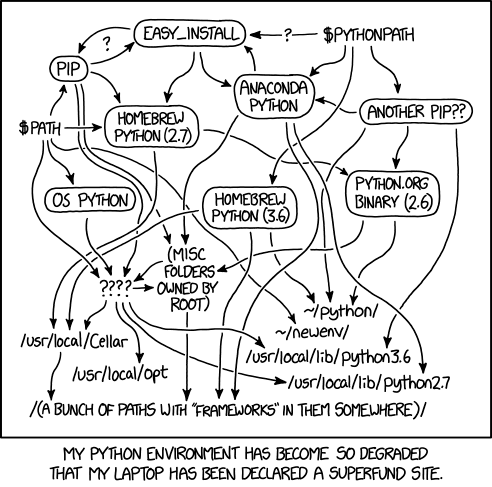Introduction to Re-executability and Virtualization
The structure of this morning will be as follows:
- An overview of computer architectures and components
- A refresher on reproducibility/re-executability and its relevance in Neuroscience
- An introduction to virtualization:
- Vrtualenv
- Conda
- Containers, and
- Virtual Machines
- A case study in selecting virtualization tools:
- Containing a Python project within a virtualenv
- Adding non-Python dependencies with Conda
- Bridging operating systems with Docker
- Converting to super-computers with Singularity
- A look at where Virtual Machines become necessary
- Introduction to tools and platforms for effective sharing of tools
- Building our own Python and Docker environments
Overview of Computers
Reproducibility in Neuroscience
- Operating system versions can cause meaningful differences
- Different processing tools produce different results
Introduction to Virtualization

In short, there are a lot of tools that allow you to abstract the build process of your tools at various levels. For instance, let’s look at the following:

We see that at the lowest level we have “bare metal” – these are applications that are installed directly on a system. Slightly above that we see virtual machines. These encapsulate entire operating systems (of any type) and file systems, and can function completely on their own. Above that, we see Docker containers. These come with libraries associated with one of many possible Linux/Unix-based operating systems, and interacy with the operating system of the machine upon which they’re being run. Slightly further we have Conda environments that run natively to an operating system and install libraries and packages there. These are built directly within a given operating system. Finally, we have pip virtual environments which are similar to Conda environments with the exception that they only manage packages which have been developed and shipped in Python.
Depending on the nature of your analysis, how you wish to distribute it, its dependencies, and where you’d like to run it, a different level of virtualization may be appropriate. As a rule of thumb, let’s say:
| Tool | Description | Do I want to do this? |
|---|---|---|
| Pip Virtualenv | “I want to install and package Python libraries on my machine” | Yes! |
| Conda | “I want to install and package Python libraries and other tools on my machine” | Yes! |
| Docker | “I want to package tools for any machine” | Yes! |
| Virtual Machine | “I want to package an entire machine” | *Not very often… |
Case Study in Virtualization
Introduction to Effective Sharing of Tools
See: poster on FAIR pipelines with Boutiques and Zenodo